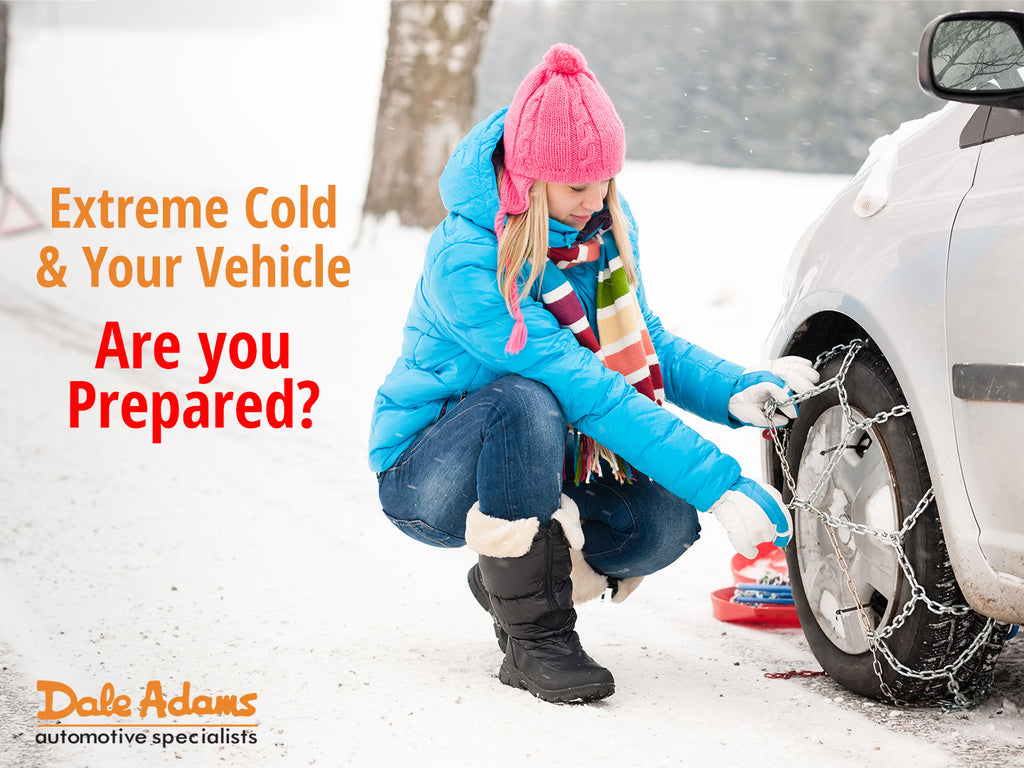Extreme Cold & Your Vehicle—Are you Prepared?

Extreme Cold & Your Vehicle—Are you Prepared?
If you live in a place like where we live here in Calgary, Alberta, Canada, you realize that it can get really cold out here sometimes. We are talking temperatures that can drop to -25 °C (-13°F) or even colder when you add wind-chill. Nobody likes that, and even worse, it takes a toll on your vehicles.
So the questions is, what is the best way to prepare your vehicle and what is the recommendation for warming up your vehicle before you drive?
How Long Should I Warm a Vehicle Before Driving?
You won't like this answer, but it is actually best to minimize the amount of time you need to warm up your vehicle. Environmental benefits aside for a second, it is actually harder on your vehicle to start it and let it warm up for a long time before driving than it is to start it for just as long as it takes to clear the vehicle windows so you can see.
Please note that this advice applies to anyone driving a vehicle that was built post-1980s. If you have an older vehicle you will indeed need to warm it up a bit more.
If you want a very detailed explanation of all of this our friends at Esurance.com have an excellent detailed article all about this.
Vehicle Preparation for Freezing
To be ready for the freezing temperatures you would be best advised to be sure your vehicle is ready for winter to minimize the chance of not starting or breaking down in a situation where you would not want to have to walk or flag down help in these extreme conditions. Trust me, I once was in a car that broke down in the country in extreme cold and trying to walk to a small local town was not fun, and downright dangerous. Here are 8 tips you should take to heart when you want to be sure that your vehicle is winter and cold ready.
1. Refill your fluids
- Check your windshield washer fluid and think about replacing it with something formulated expressly for cold weather. Winter blends use a greater ratio of alcohol-to-water and are less likely to freeze.
- Refill anti-freeze (be careful not to mix colors) or flush it if it hasn’t been changed in a few years.
- Check your oil and consider changing to a cool-temp formulation with lower viscosity for better winter performance.
2. Get winter wiper blades
Swapping out your standard windshield wipers for winter blades can do wonders for your visibility in harsh driving conditions. These blades have been tested to withstand and perform at extremely low temps and are designed to be more flexible, protecting better against the buildup of snow and ice.
3. Take care of your battery
A bout of cold weather can be the death knell for a worn battery, so assess your battery’s health before the cold weather begins (hot summer days also take a toll on car batteries). Change your battery every 3 years (follow the manufacturer’s instructions for your vehicle) and check for signs of corrosion.
4. Invest in winter tires (chains)
All-season tires are fine most of the time, but if you’re dealing with extremely cold temperatures and slick pavement, it might be worth investing in a good pair of winter tires. With specialized tread patterns and rubber compounds, winter tires will give you the enhanced traction you need on icy roads.
If you are often driving in deeper snow and ice it is also recommended that you carry a set of chains or have something for increased traction control like sand, kitty litter, etc.
5. Check your tire pressure
In cool air, tire pressure can drop. You’ll want your tires properly inflated all winter long in order to maintain optimal traction, so it’s important to do periodic checks to ensure they’re at the right levels. Each car is different, though, so check your car manual for the recommended amount.
6. Grease your locks
Car locks can freeze in the extreme cold. Using a grease agent or lubricant spray can help keep all your car’s moving parts in working order. Inject lubricant spray into lock cylinders to keep things moving all winter long. And if you have a little extra time, try lubricating your door hinges too.
7. Always have a charged cell phone
Most areas are within cell coverage now and this can be a life saver. You should always have a chrging cable connected to your car so you can charge while driving. You never know when you might need help and you can't always be sure others will drive by to help. Having a cell phone by your side can save you. If you are driving in remote areas it is always good to let somebody know when you are expected to arrive so just in case you miss that deadline they can start to look for you.
We hope all of these tips are helpful and that your vehicle is ready for the cold. If you have any questions about your vehicles readiness please contact us and we'd be happy to help. We have winter tire options for all vehicles old and new at reasonable prices. Stay warm and safe on the roads.
8. Have a safety kit & supplies in the trunk
In the event something goes seriously wrong you want to at least have a minimum amount of supplies. We recommend all of these but think about having the following in your vehicle somewhere:
- A small shovel
- Traction aides - Chains, kitty litter, sand, salt, etc.
- A first aid kit
- A bunch of candles (The light and warmth of just a few candles can keep a vehicle warm.
- A blanket
- Some water and some high-protein snacks like granola bars
- A flare and road signs
- Extra windshield fluid (Good to at least -30)
Dale and the Dale Adams Automotive Crew


Dale Adams
Author